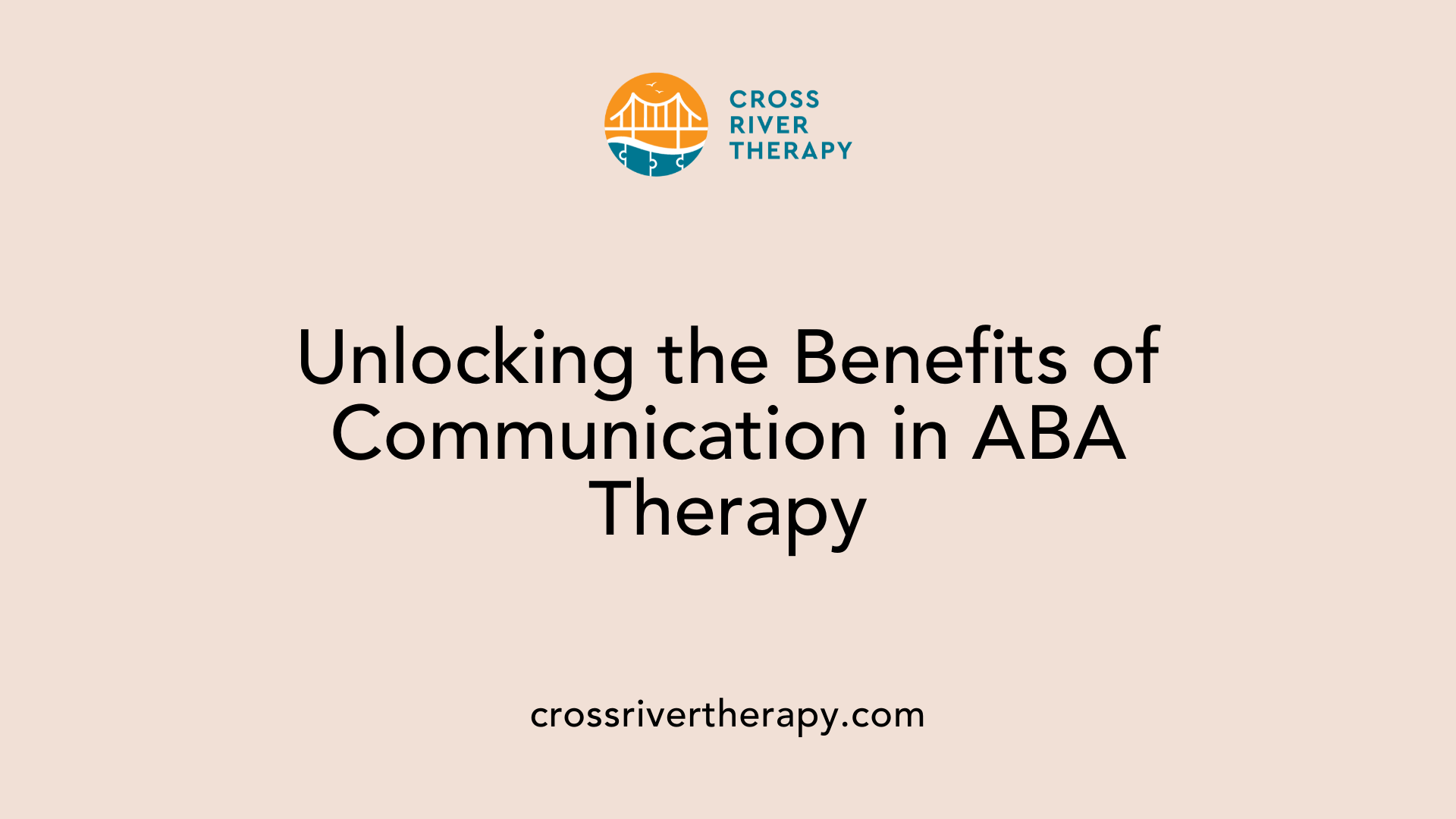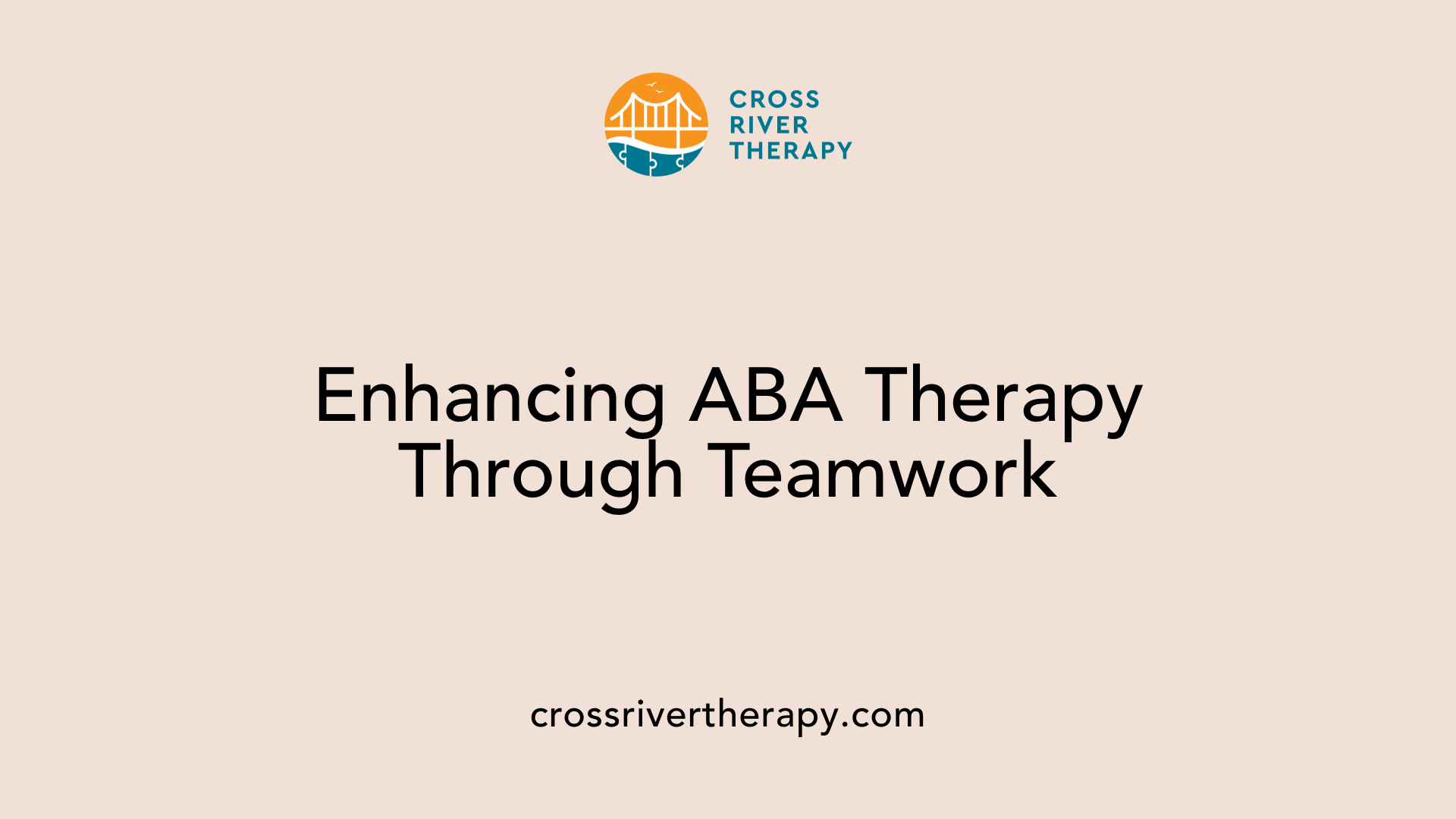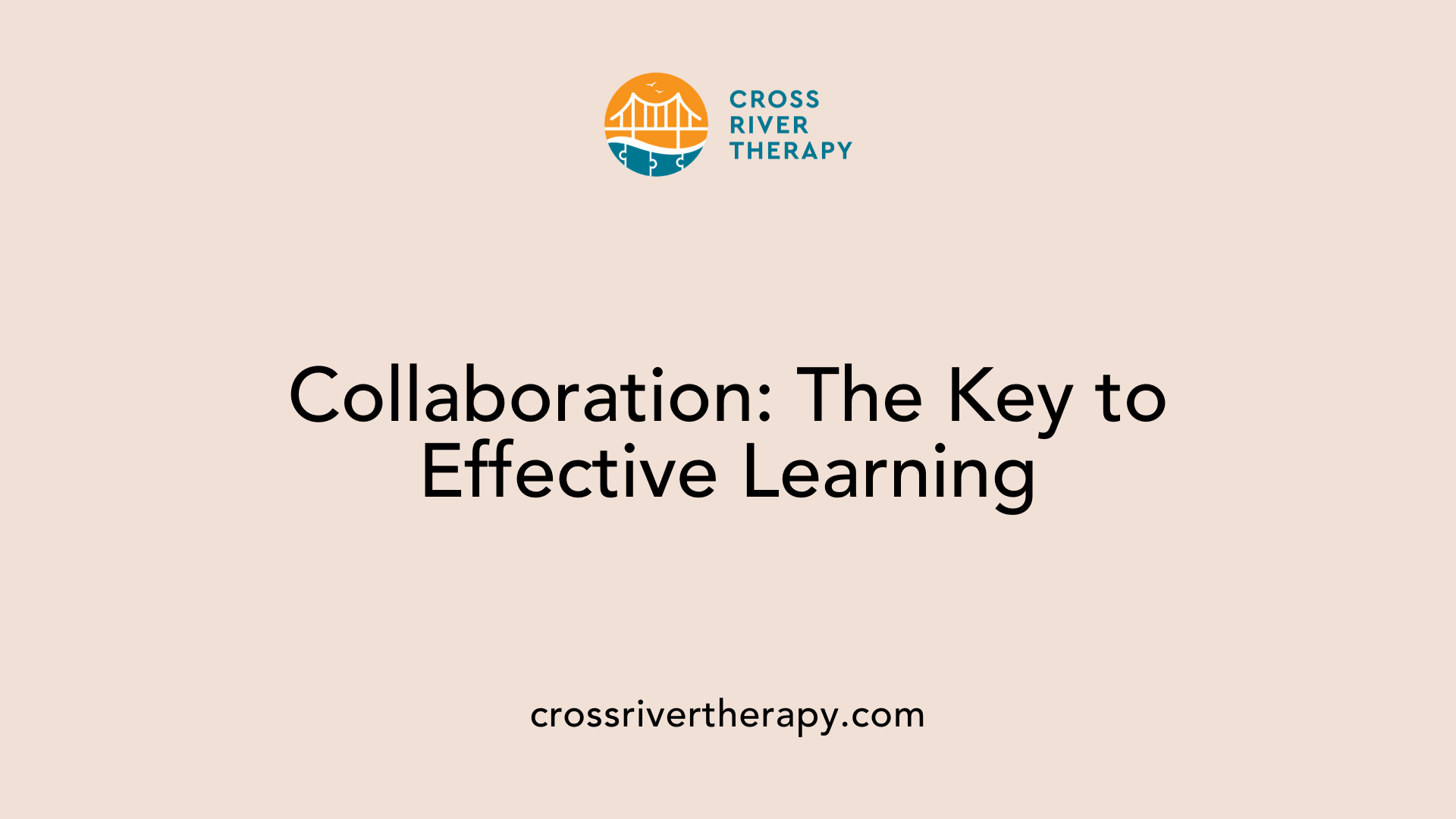The Importance of Consistent Communication Between ABA Therapists and Teachers
Enhancing Autism Therapy through Unified Communication Strategies
Understanding the Power of Communication in Autism Therapy
Autism Spectrum Disorder (ASD) affects communication and behavior, making early intervention and consistent strategies crucial for positive outcomes. Applied Behavior Analysis (ABA) therapy has emerged as a leading approach to help children with autism develop essential skills. However, the success of ABA therapy depends significantly on the coordination and communication between therapists, educators, and parents. This article explores the vital role of consistent communication in enhancing ABA therapy effectiveness, supporting the educational development of children with autism.
The Impact of Consistent Communication on ABA Therapy Outcomes

How does consistent communication impact ABA therapy outcomes for children with autism?
Consistent communication in applied behavior analysis (ABA) therapy plays a pivotal role in enhancing outcomes for children with autism spectrum disorder (ASD). By fostering collaboration among therapists, parents, and educators, it helps to create unified strategies and interventions that are critical for effective learning.
Regular dialogue ensures that all involved parties are aligned on the goals and methods of treatment. This collective approach enhances the execution of personalized therapy plans, which has been shown to lead to improvements in essential skills such as social communication. Research highlights that early interventions significantly impact these capabilities, especially when they begin at a young age—around 3.81 years can yield noticeable benefits in social interactions and academic performance.
The context and consistency in communication directly contribute to the success of the interventions. Evaluations indicating larger effect sizes are often conducted in environments that reflect the setting in which interventions are applied. Although clinician-led initiatives usually demonstrate greater effectiveness, the contributions of parent-led strategies enhance the overall progress. Consistent updates and strategies ensure that therapy consistency extends into home and educational settings, which is crucial for skill retention and generalization.
The role of collaboration among caregivers
Collaboration among caregivers is at the heart of effective ABA therapy. It centers around shared responsibilities and insights that enhance the therapy experience and outcomes for the child. Parents, educators, and therapists must maintain open lines of communication to discuss the child's progress and adjustments to strategies.
Some effective methods for achieving communication include:
- Regular Meetings: Scheduled discussions between parents and therapists to review progress.
- Communication Tools: Utilizing email or messaging platforms to bridge gaps in updates efficiently.
- Unified Interventions: Ensuring that techniques and responses to behaviors are consistent across home and school settings.
This collaborative approach not only supports the child’s development but also enhances the caregivers’ understanding of the therapy process. When parents and teachers work together effectively, children gain a more secure learning environment that nurtures their growth in various settings. Effective communication strategies, inclusive of IEP meetings and active parent engagement, are vital steps in consolidating the support network around the child.
The Significance of Therapist-Educator Coordination

What is the significance of coordination between ABA therapists and educators in enhancing therapy effectiveness?
Coordination between ABA therapists and educators is crucial for enhancing therapy effectiveness. This collaboration ensures that therapeutic strategies are seamlessly integrated into the educational environment. A unified approach promotes better skill development for children with autism, who thrive on predictability and consistency.
Regular communication among therapists, educators, and parents creates a strong support network. This interaction helps align behavioral goals and strategies, preventing contradictory approaches that could confuse the child. By maintaining consistent methodologies across settings—home, school, and therapy—children are better equipped to generalize their learning, applying skills learned in one environment to others.
Additionally, effective communication fosters timely revisions of treatment plans. When educators and therapists share insights about a child's progress, they can quickly adapt strategies to better meet the child’s evolving needs. This responsiveness not only supports skill retention but also enhances overall educational outcomes.
Here are some practical roles that coordination between therapists and educators plays:
| Role | Explanation | Benefits |
|---|---|---|
| Unified Goals | Establish a common plan for the child's objectives | Reduces confusion and promotes clarity in the child's developmental path. |
| Consistent Strategies | Apply similar behavioral strategies across settings | Reinforces learning, making it easier for children to internalize and generalize their skills. |
| Collaborative Feedback | Regular updates on the child's progress and challenges | Supports adjustments in teaching and therapeutic approaches based on comprehensive observations from multiple perspectives. |
| Holistic Care | Incorporate insights from different aspects of the child's life | Aligns resources effectively, ensuring a well-rounded approach that supports the child’s full development in both therapy and academic settings. |
Best Practices for Effective Communication and Collaboration

What are some best practices for maintaining effective communication and collaboration among ABA professionals and teachers?
Maintaining effective communication and collaboration among ABA professionals and teachers is essential to support the development of children with autism. Here are some best practices:
- Regular Meetings: Schedule consistent meetings to discuss the child’s progress and strategies that work well in both therapy and classroom settings. This keeps everyone informed and focused on shared goals.
- Shared Documentation: Utilize shared documentation tools, such as progress reports and logs, to promote transparency regarding the child’s development. Access to this information allows for collaborative adjustments to treatment plans.
- AAC Methods: Implement augmentative and alternative communication (AAC) methods, such as Picture Exchange Communication System (PECS) or Speech Generating Devices (SGDs), to facilitate communication about the child’s needs and preferences.
- Clear Communication Channels: Establish clear channels for communication, such as email or messaging apps, with a designated schedule for updates to keep everyone in sync.
- Active Listening: Encourage an environment of active listening where all parties feel heard and respected. This helps in understanding each child's unique needs better.
- Parental Input: Involve parents in discussions about their child's behaviors and preferences. Their insights are valuable in forming a cohesive support system.
- Continuous Assessment: Board Certified Behavior Analysts (BCBAs) should regularly assess and adapt communication strategies to meet the evolving needs of the child effectively.
Utilizing Communication Tools
Utilizing effective communication tools can significantly enhance collaboration:
| Tool Type | Purpose | Examples |
|---|---|---|
| Messaging Apps | Quick updates and discussions | WhatsApp, Slack, GroupMe |
| Video Conferencing | In-depth meetings and consultations | Zoom, Google Meet, Microsoft Teams |
| Document Sharing Platforms | Sharing documents and notes | Google Drive, Dropbox, OneDrive |
| Feedback Forms | Collecting input from parents | Google Forms, SurveyMonkey |
| IEP Collaboration | Coordination on educational strategies | IEP meetings, shared IEP documents |
Using these tools allows for effective organization and timely sharing of information, ultimately improving the child’s therapy experience.
The Role of Consistent Communication in Education and Development

Why is consistent communication crucial for the educational experience and development of children with autism?
Consistent communication is essential in the educational journey of children with autism, as it creates a reliable channel for expressing needs and understanding the world around them. Many autistic children face challenges in verbal communication and often use alternative means to convey their thoughts and feelings. By adopting a stable communication framework, educators can better address these unique styles, ensuring that students feel heard and supported.
Furthermore, consistent communication bridges therapy and educational settings, enabling the reinforcement of skills learned during ABA therapy. This continuity allows children to engage more meaningfully with their peers, thereby enhancing their social interactions and emotional connections.
Incorporating strategies such as Functional Communication Training (FCT) and the use of Augmentative and Alternative Communication (AAC) helps reduce frustration and fosters active participation. By emphasizing clarity and support in communication, educators can significantly influence developmental outcomes, making learning more accessible and effective for these children.
Implementing communication strategies
Effective communication strategies are pivotal in optimizing the educational experience for children with autism. Here are some practical methods:
- Functional Communication Training (FCT): This practice focuses on teaching children to use specific communication methods effectively across different contexts.
- Daily Communication Log: Keeping a record of daily communications between therapists and educators helps track the child’s progress and adjust strategies as needed.
- Visual Supports and Schedules: Utilizing visual aids can enhance understanding and provide a structured routine that many children with autism benefit from.
- Regular Meetings: Frequent check-ins between parents, teachers, and therapists foster collaboration, ensuring everyone is aligned in supporting the child'sdevelopment.
- Involvement of Board Certified Behavior Analysts (BCBAs): BCBAs can assist by attending IEP meetings and collaborating with educators to discuss effective behavioral strategies.
These strategies not only promote a healthy learning environment but also empower children with autism to express themselves and succeed in both educational and social realms.
Collaboration Benefits for ABA Therapy

How does collaboration between parents, therapists, and teachers benefit ABA therapy?
Collaboration between parents, therapists, and teachers greatly benefits ABA therapy by ensuring a coordinated approach to the child’s development. Each participant brings unique expertise, allowing for the creation of comprehensive treatment plans that address various aspects of the child's needs.
- Parental Involvement: Parents play a critical role in modeling and reinforcing behaviors at home. This consistent reinforcement makes techniques learned during therapy more effective and helps children apply these skills in daily life.
- Educational Strategies: Teachers can integrate ABA strategies within classroom settings, promoting consistency and maximizing positive outcomes. Consistent application of learned skills across different environments is crucial for effective generalization.
- Improved Communication: Effective collaboration fosters open communication, helping all parties stay informed about the child’s progress and any behavioral strategies in use. This seamless communication reduces confusion and allows for rapid adjustments when needed.
Ultimately, this multidisciplinary cooperation enhances problem-solving capabilities and provides a more holistic framework for care, significantly improving treatment outcomes for children with autism. Through regular discussions and updates, the entire team can adapt to the child’s evolving needs, ensuring that support is continuous and effective across all settings.
Strategies for Generalizing Skills Across Environments
Importance of skill generalization
Skill generalization refers to the ability of an individual to apply learned skills across different settings—such as home, school, and community. For children with autism, achieving this generalization is essential for ensuring that skills learned in ABA therapy are not confined to the therapy room but are integrated into daily life.
Consistency across home, school, therapy
Creating a consistent reinforcement system is key to facilitating this process. Here’s how:
- Uniform Responses: All caregivers—parents, teachers, and therapists—should apply similar strategies and responses when addressing behaviors. This consistency helps the child to connect their actions with outcomes, regardless of where they are.
- Open Communication: Encouraging regular updates among all involved parties ensures everyone is on the same page about strategies and progress. This collaboration allows for adjustments and reinforces learning.
- Reinforcements: Using the same positive reinforcement techniques, whether it's verbal praise or rewards, across different environments enhances the child's ability to generalize new skills taken from therapy into their everyday experiences.
Since consistent reinforcement supports skill generalization, implementing these strategies effectively links therapy learning with real-life application.
The Benefits of a Consistent, Structured ABA Approach
Why is a structured approach vital for children with autism in ABA therapy?
A structured approach in ABA therapy is essential for children with autism because it provides predictable routines that reduce anxiety and enhance focus. This structured consistency allows children to engage more effectively in learning, helping them retain and apply new skills across different settings.
Consistent routines also promote a sense of safety and security, which is critical for children who thrive in predictable environments. Through a stable ABA framework, children can achieve improved life skills and social behaviors.
Structured ABA benefits
- Skill retention: Each ABA session builds upon the previous ones, making regular attendance vital for continuity in learning.
- Behavior modification: Consistent efforts help identify triggers and implement uniform interventions for challenging behaviors.
- Communication development: Regular, structured sessions facilitate ongoing practice and refinement of communication skills.
- Social enhancement: Continuous practice within structured environments boosts social interaction capabilities.
Creating stable environments
Consistent ABA therapy sessions create a stable environment for children, fostering better engagement and reducing anxiety. Regular attendance promotes:
- Predictability: Children become accustomed to routines, which enhances their learning experiences.
- Collaboration: Active communication among therapists, parents, and teachers ensures that strategies are uniform across settings, enhancing the child's overall development.
The Lasting Impact of Unified Communication in ABA
As ABA therapy continues to support the development of children with autism, the importance of consistent and open communication among therapists, educators, and parents cannot be overstated. By fostering a collaborative environment, these stakeholders can ensure that strategies and interventions are applied consistently across all areas of the child's life. This integrated approach not only supports skill generalization and behavioral development but also enhances the educational experience, paving the way for more successful future outcomes for children with autism.
References
- 8 Reasons to Prioritize ABA Therapy: Consistency is Key
- Tips Effective Parent-Teacher Communication During ABA Therapy
- Why Consistency in ABA Therapy Is Key for Long-Term Success
- Why it Matters: Consistency in ABA Therapy
- The Importance of Consistency in ABA Therapy: How Routine Builds ...
- The Importance of Consistency in Autism Therapy
- The Role of ABA Therapy in Enhancing Communication Skills
- Building A Collaborative Relationship With Your Child's Educators
- 4 Methods for Increasing Communication Within Applied Behavior ...



